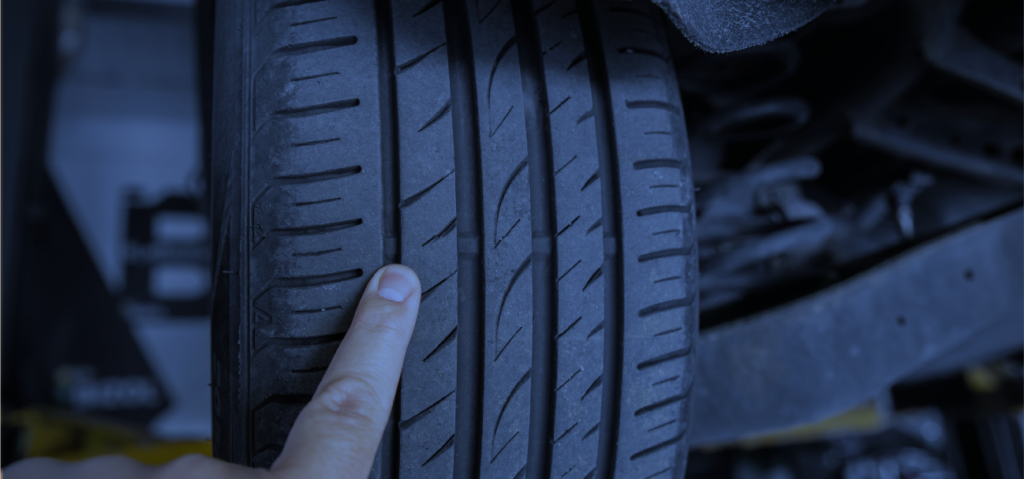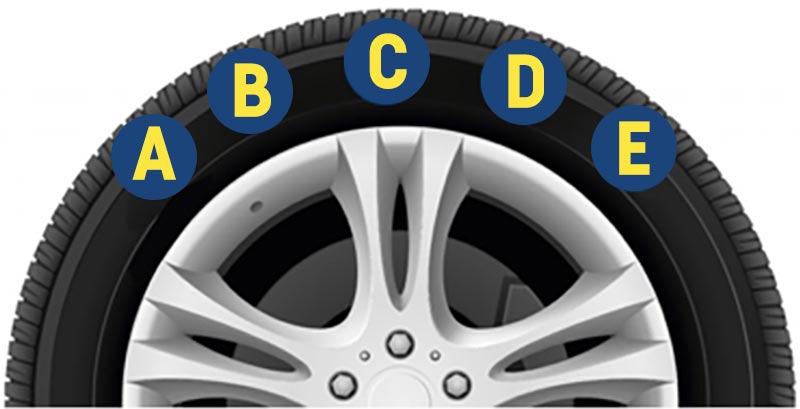
6 types of tyre wear problems and how to identify them
NewsOwning a vehicle means knowing the importance of regular maintenance, including monitoring the condition of your tyres.
As the only point of contact between your vehicle and the road, your tyres are expected to be the most common place to receive the bulk of the wear and tear to your vehicle. While most tread problems are easily identifiable, 1 in 5 drivers admit to never having checked their tyres and may miss important warning signs that may help prevent any damage at its source.
How do I check for abnormal wear?

It is recommended that you should be inspecting your tyres at least once a month for pressure levels and tread depth. This is even more important when you expect to travel on longer journeys than usual, or during extreme temperature changes.
How do I check my tyre pressure?

The easiest method of detecting potential problems with tyre pressure is utilising your TPMS (tyre pressure monitoring system).
This is a small sensor installed in each of your wheels that constantly monitors the individual tyre pressures, detecting any issues or possible punctures and feeding this information through to the dashboard in real time. As of 2014, any new passenger car sold in the EU must be fitted with a tyre pressure monitoring system (TPMS) so if your vehicle is within this age range, this option should be available to you.
However, it’s still important to check your tyre pressures yourself often and include it as part of your routine checks to ensure your vehicle is in optimal condition.
For cars older than this, it becomes much more important to consistently check for any potential problems with your tyres. If you’ve never done this before, the RAC has a handy step-by-step guide you can follow.
How do I know if my tyres have abnormal tyre wear?
There are several visual cues that you can use to identify whether your tyre has wear or is at risk of damage. Here are a few of the most common signs of wear you can look out for when checking over your tyres:
- Toe Wear – Heel or Toe Wear is when the front or rear portion of your tread block wears away faster than the rest of your tyre. This is usually an indication of poor tyre alignment.
- Camber Wear – When your tyre appears lopsided with warping one way or the other. Usually caused by your suspension manifesting with your tyre leaning inwards or outwards.
- Patch Wear– Identified by patchy and uneven wear across your tyre. Typically caused by uneven alignment or out-of-balance tyres. You will need to have your tracking re-aligned to avoid further wear and damage.
- Centre Wear – Found in the centre of your tread block, this is an indication that your tyres are overinflated so it’s best to refer to your owner’s manual to ensure your tyres are at the correct pressures.
- Edge wear – Caused by underinflation – similar to centre wear it’s best to refer to your owner’s manual to be sure your tyres have the correct amount of air.
- Cup Wear – A typical symptom of suspension issues. Cup wear causes noticeable grooves in your tyre, as your suspension struggles to roll smoothly, causing bouncing which results in pressure on your tyre.
If you are ever in doubt, you can reach out to your local Landsail distributor. Fixing any issues today could ensure your safety and the longevity of your vehicle.
For more information on maintaining your tyres, check out Fuzz’s video here. To learn more about Landsail tyres and our range check out our product page here.



